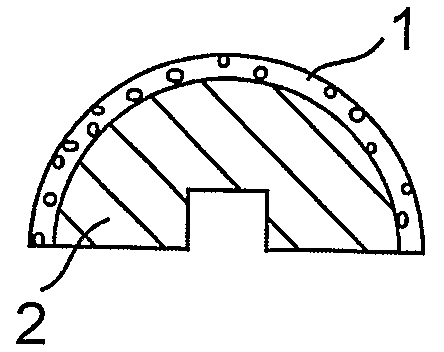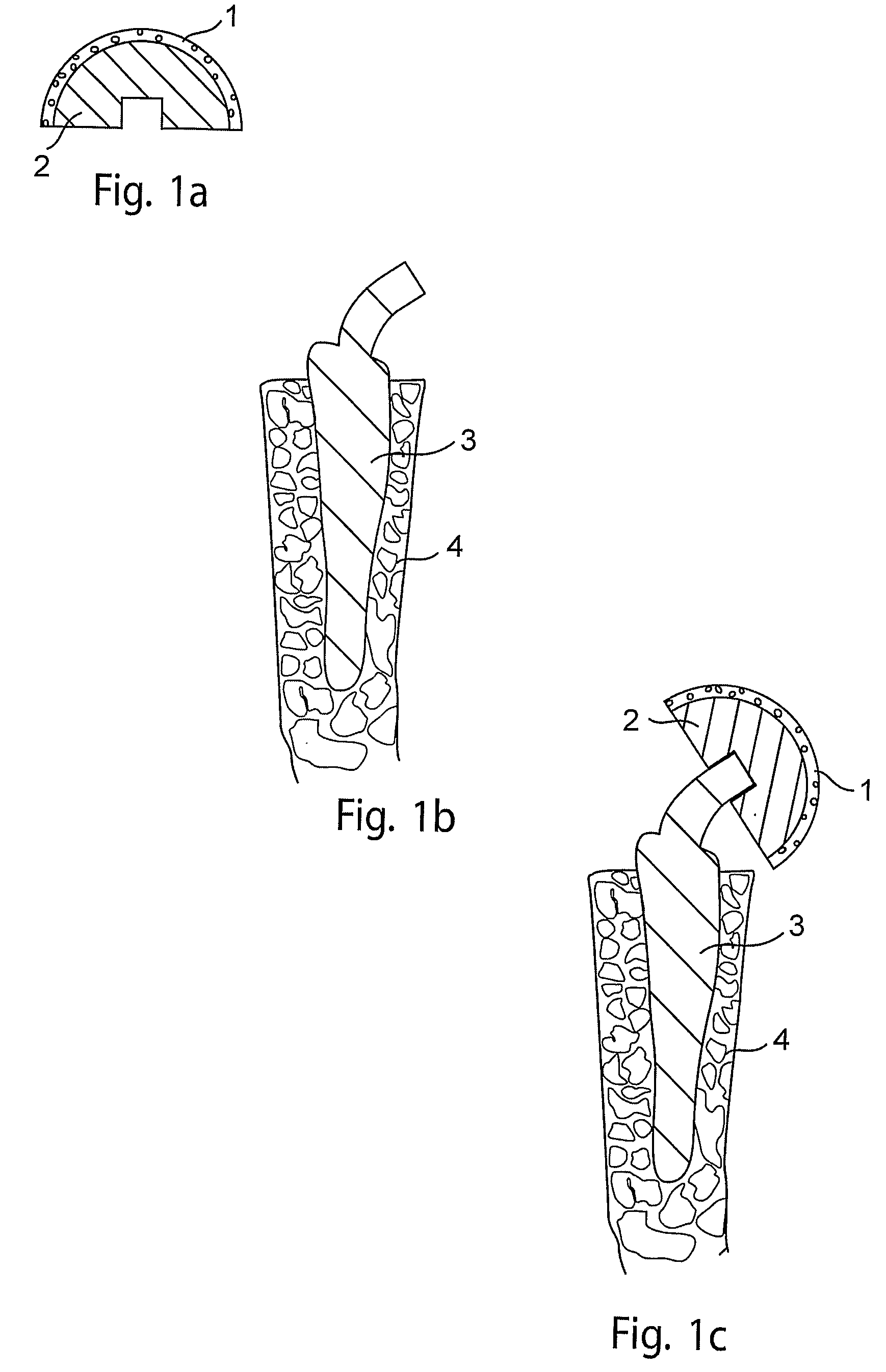Implants and Methods for Repair, Replacement and Treatment of Disease
a technology for implants and joints, applied in the field of implants and methods for repair, replacement and treatment of diseases, can solve the problems of current treatments for repairing or ameliorating joint diseases, significant health care, economic and social costs, pain and disability in the adult population, etc., and achieve the effect of facilitating the positioning or physical stability of implants in patients
- Summary
- Abstract
- Description
- Claims
- Application Information
AI Technical Summary
Benefits of technology
Problems solved by technology
Method used
Image
Examples
example 1
[0053]This example illustrates replacement of a femoral head in a patient suffering from a femoral head fracture with an implant.
[0054]In this example, as shown in FIG. 1, a porous femoral head prosthesis (2) comprising a rounded surface comprising pores of median diameter of about 10 microns, is placed in an in vitro cell growth chamber. Juvenile chondrocytes are seeded onto the rounded surface, and cultured as described in Adkisson, H. D. et al., Clin. Orthop. 391S: S280-S294, 2001; and U.S. Pat. Nos. 6,235,316 and 6,645,316). The chondrocytes are permitted to grow until a layer of neocartilage (1) forms on the surface of the prosthesis (FIG. 1a). A surgeon then drives a spike-shaped subchondral base (3) comprising trabecular metal into the proximal femur (4) of the patient (FIG. 1b). The surgeon then attaches the femoral head prosthesis comprising neocartilage (1) and trabecular metal (2) to the subchondral base (3), thereby forming an implant comprising cartilage and a subchondr...
example 2
[0055]This example illustrates attachment of neocartilage to a subchondral base in vitro.
[0056]In this example, as shown in FIG. 2, a subchondral base (5) comprising trabecular metal and shaped to replace a condyle (6) is rendered adherent for cartilage by application of a fibrin adhesive to the rounded surfaces of the trabecular metal. The rounded surfaces of the base is then contacted with neocartilage grown in vitro (7) (FIG. 2a). The neocartilage (9) adheres to the adhesive layer (8), providing a layer of neocartilage following the contours of the surface of the base (9), thereby forming an implant which can replace a diseased or injured condyle of a patient (FIG. 2b).
example 3
[0057]This example illustrates use of a positioning structure to introduce an implant into a patient.
[0058]In this example, as shown in FIG. 3, a subchondral base (11) comprising trabecular metal and having an internal screw thread is seeded with chondrocytes which are cultured to form neocartilage (10), thereby providing an implant (FIG. 3a). A surgeon prepares a cylindrical-shape implant site which traverses the patient's cartilage and invades the bone in a condyle of the patient (13). The implant site has a depth and diameter corresponding to the implant. The surgeon then inserts a non-trabecular metal screw (14) into the site, leaving the screw partially exposed (FIG. 3b). The surgeon then lightly presses the implant into the site, thereby engaging the exposed screw (14) with the internal screw thread of the implant. The surgeon presses on the implant until the neocartilage (1) is flush with the patient's cartilage (FIG. 3c). The neocartilage can then heal smoothly with the pati...
PUM
| Property | Measurement | Unit |
|---|---|---|
| Pore size | aaaaa | aaaaa |
| Pore size | aaaaa | aaaaa |
| Pore size | aaaaa | aaaaa |
Abstract
Description
Claims
Application Information
 Login to View More
Login to View More - R&D Engineer
- R&D Manager
- IP Professional
- Industry Leading Data Capabilities
- Powerful AI technology
- Patent DNA Extraction
Browse by: Latest US Patents, China's latest patents, Technical Efficacy Thesaurus, Application Domain, Technology Topic, Popular Technical Reports.
© 2024 PatSnap. All rights reserved.Legal|Privacy policy|Modern Slavery Act Transparency Statement|Sitemap|About US| Contact US: help@patsnap.com










